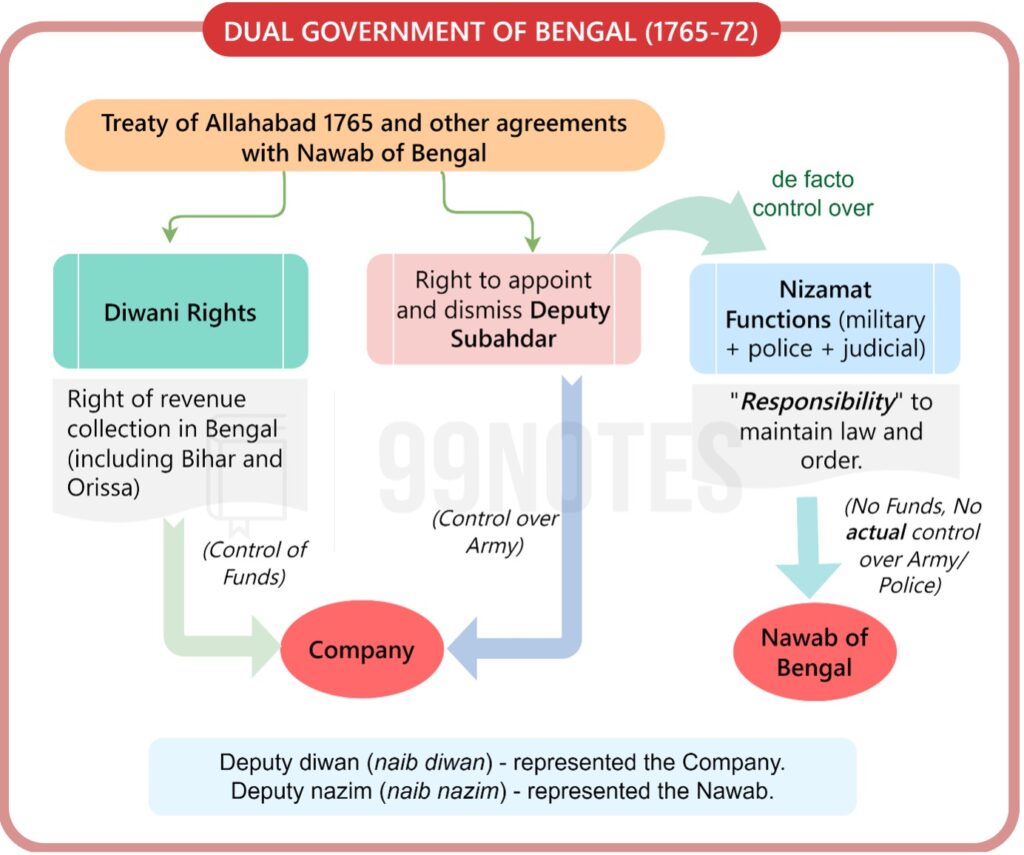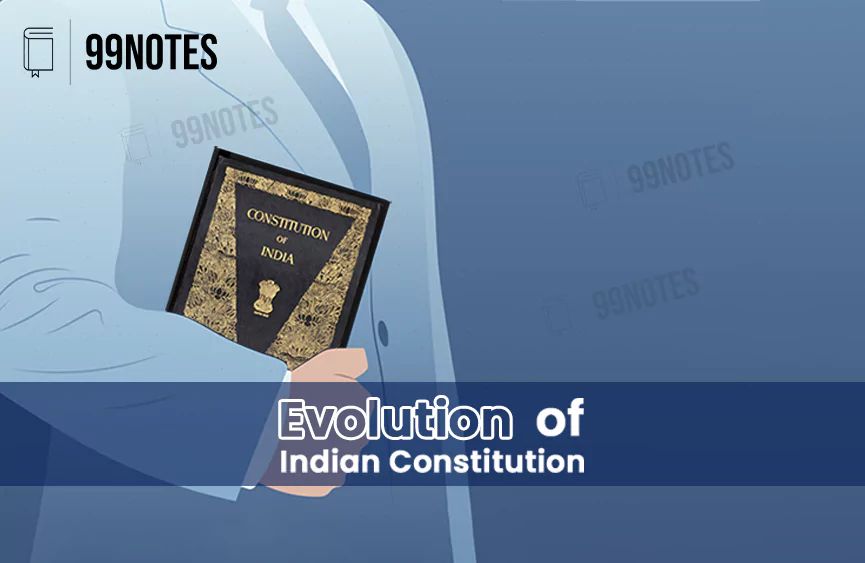Evolution of Indian Constitution
Evolution of Indian Constitution – Historical Underpinnings
Indian constitution came into force on 26th January 1950 after almost three years of hard work by the Constituent Assembly of India. However, the constituent assembly itself did not make it completely fresh. It took the best of the principles and ideas of the world and the already existing Indian laws to form the Indian Constitution.
Thus, it is necessary to understand the historical underpinnings of the Indian Constitution.
Historical Background of the Indian Constitution
The historical background of the Indian Constitution can be found in British rule in the country. The British came to India as traders in 1600 in the form of the East India Company, which had the exclusive rights of trading in India under a charter offered by Queen Elizabeth I.
The British Rule in India mainly came in two phases, viz. Company rule and Crown rule.
- The company rule concluded with the revolt of 1857 (1st War of Independence).
- Thereafter, the Imperial Crown of Great Britain took over the country’s administration.

The historical backdrop of the Indian Constitution and its evolution initiated with the Regulating Act of 1773, which was the first time the British Parliament passed a law to regulate the affairs of the East India Company (E.I.C) in India.
- In 1928, the Lucknow All Parties Conference drafted the Constitution of India, which was also known as the Nehru Report.
- There are various layers in the background of the Indian Constitution. Now we will discuss all of them as they played an instrumental role in developing the Indian Constitution.
The Dual Government System
- After the Treaty of Allahabad (1765) between the Mughal Emperor and the British, the responsibility of governance was laid on the shoulders of the Britishers for the first time in history.
- A system of Dual Government was introduced in Bengal by Robert Clive following the Treaty of Allahabad (1765) after the Battle of Buxar.
- Under the Dual governance system, the British administration acquired both the functions of the Diwani and Nizamat of Bengal.
|
Diwani = Revenue and Civil Administration (acquired from the Mughal emperor) Nizamat = Police and Criminal Administration (Nawab of Bengal) |
Mismanagement during the Dual government phase
Dual governance was a failed experiment due to the following reasons:
- Rampant corruption among the company servants, who used private trading to enrich themselves.
- Excessive revenue collection and oppression of peasantry.
- The Company’s bankruptcy while the servants were flourishing.
To tackle this situation in India, the British Parliament constituted a committee to probe into the Company’s affairs. The report submitted by the committee paved the way for the Regulating Act of 1773 to enforce governmental control and regulate the affairs of the Company.
Regulating Act-1773
This was the first step taken by the British government to regulate and control the Company’s affairs in India. It has not given complete power to the Company hence called a regulating act.
Why was the Regulating Act of 1773 introduced?
- Economic reason: The famine in 1770 affected agriculturists, and revenue collection was so poor that it led them to the brink of bankruptcy.
- Political Reason: To bring Company affairs under Parliament control and put an end to the arbitrary rule of the Company.
- Bad Governance: The system of Dual government was an utter failure.
Thus, the regulating act of 1773 was introduced.
Provisions of Regulating Act, 1773:
- It designated the Governor of Bengal as the ‘Governor General of Bengal’ with an executive council of 4 to assist him.
-
- The act subsumed the presidencies of Madrasand Bombay under Bengal’s control. It laid the ground for a centralised administration in Indian Subcontinent.
- Governor of Bengal designated as the Governor General of Bengal. The majority would make all the decisions, and Governor General could only vote in case of a tie.
- The Governor General of Bengal had a tenure of 5 years.
- Warren Hastings was appointed as the 1st Governor General of Bengal.
- The governance system consisted of the Court of Directors and the Court of Proprietors.
- The Court of Directors’ term increased to 4 years from 1.
-
- 1/4th of them used to retire every year.
- Provision for re-election was Absent.
- 24 of such directors were present.
- Court of Proprietors: This Court of Directors was elected by shareholders of the Company annually. The collective body of these shareholders was calledthe Court of Proprietors.
- Governance of the Presidency was conducted by a Governor and a Council responsible to Home Government.
- The Governor General’s Council had 4 members to assist him. It was made supreme over other Presidencies in matters of war and peace.
- A Supreme Court of Judication was established with 4 judges at Fort William in Calcutta(1774), with appellate and original jurisdictions where all subjects could seek redressal.
-
- The court has both Civil and criminal jurisdiction with original and appellate jurisdiction.
- It was independent of Governor-General in Council.
- Sir Elijah Impey was the 1 st chief justice of the Supreme Court.
- The act prevented Company officials from receiving any cash or gift in kind.
- Made it compulsory to renew Company Charter every 20 years.

Related FAQs of Evolution of Indian Constitution
The historical background of the Indian Constitution is rooted in British colonial rule, beginning with the Regulating Act of 1773 and continuing through various acts like Pitt’s India Act (1784) and Charter Acts till 1853.
The Regulating Act of 1773 was the first law passed by the British Parliament to control the affairs of the East India Company and marked the beginning of constitutional development in India.
The Charter Act of 1833 centralized administration in India, made the Governor-General of Bengal the Governor-General of India, ended the Company’s trade monopoly, and marked the peak of British central control in India.
The Charter Act of 1853 introduced open competition for civil services, created a legislative council with separate legislative and executive powers, and did not renew the commercial privileges of the East India Company.
Understanding the evolution of the Indian Constitution is important for UPSC as it explains how various British Acts shaped India’s constitutional framework, governance, and administrative structure leading to independence.





